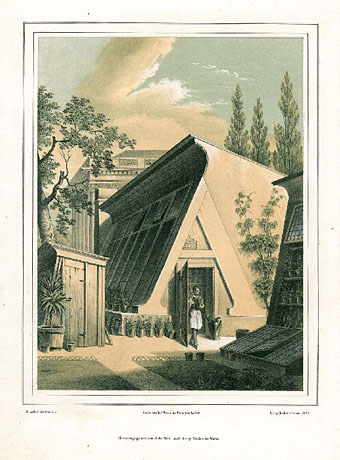
Another recommendation from Paul Rumsey (thanks, Paul!), these are from a series of lithographs dated 1842–43 by Leopold Müller based upon paintings (?) by Giovanni Battista Pian, or Giovanni Battista de Pian (1813–1857). Shades again of (Giovanni Battista) Piranesi in the name, although the pictures are a lot less Piranesian than Antonio Basoli’s; the only time Piranesi bothered with wooden materials was as a support for building stone arches, and in the spars and torture engines of his Prisons. See more of the series here.
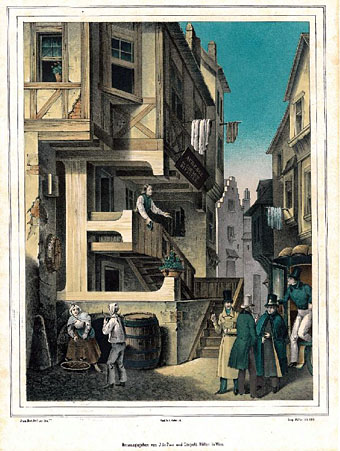
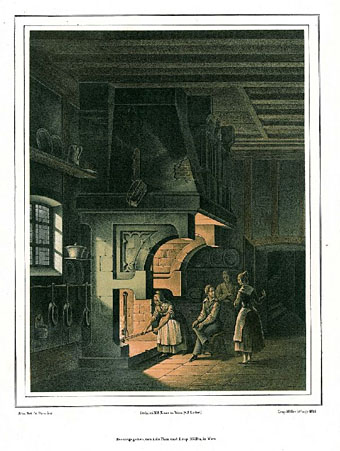
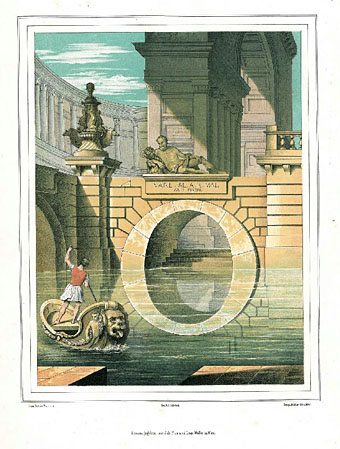
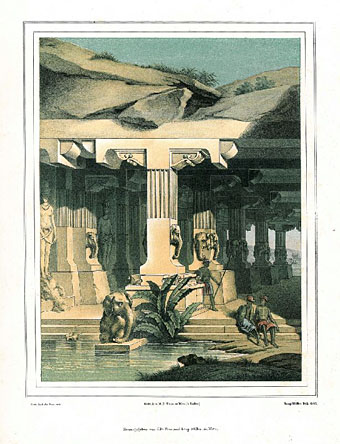
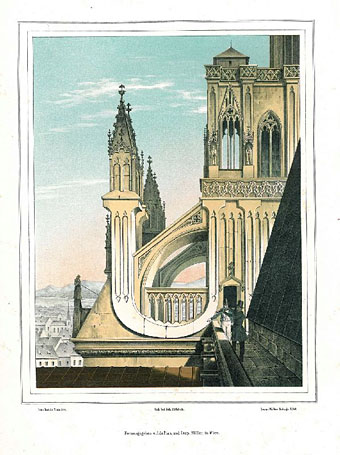
Previously on { feuilleton }
• Antonio Basoli’s Pictorial Alphabet
• Grand capitals
• Paulini’s mythological alphabet

Now that’s excellent. While always interesting and inventive, I get bored of pictorial alphabets quickly because many letters often appear forced, especially those with curves. These blend into the architecture very well.
The book ‘Antonio Basoli’ Alfabeto Pittorico 1839, also includes another architectural alphabet by Antonio de Pian, these are similar in style and format to the set in this post, but in sepia tones. I can’t find them on the internet.
The book also includes about 50 related fantastical stage designs by Karl Friedrich Schinkel, Simon Quaglio, Jacob Orth, Alessandro Sanquirico, Antonio Basoli and others…
I have a book of 100 stage designs by Antonio Basoli, ‘Collezione di Varie Scene Teatrali’ first published in Bologna 1821, reissued 1969.
Schinkel has featured here a couple of times in the past. His stage designs for The Magic Flute are quite remarkable.
I had deleted from my comment the line ‘Schinkel (who you have posted before)’. I have a large print of his Magic Flute stage design (the one with the seated statue in the center) hanging in my hallway.
The Pian alphabet , 1842, has a strange mixture of heavy wooden beams from northern rustic barns, etc, and exotic fantastical Egyptian stage designs.
It seems these were influenced by the Basoli book of stage designs from 1821, which has Egyptian stage designs very similar to the Schinkel ones for The Magic Flute from 1816.
And these were influenced by the book by Vivant Denon ‘Journey in lower and upper Egypt’ 1802.
And you have posted about Vivant Denon before…..
http://www.johncoulthart.com/feuilleton/2009/08/18/le-phallus-phenomenal/